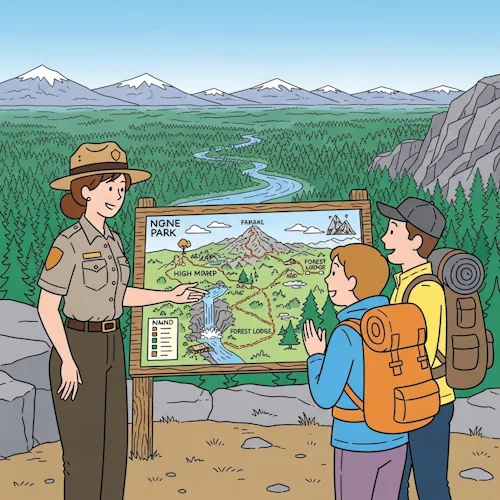Sitemap

- Home Articles
- Introduction of nyssr.net
- Non-Cloud-Based Web Applications
- Integrate Databases, Devices, and Software from Multiple Locations into Your Web Application
- Make Use of Mesh Network Features: Scalability, Redundancy, and Resilience for Your Applications
- Evergreen Software via Distributed Small Services in a Node Network
- Web Applications That Operate in a Whole New Way
- Integrating Session Management with User, Role, and Permission Management
- Out-of-the-Box Service Resolution with Zero Configuration
- Countless Nodes in a Network, Each Running Hundreds of Services
- Technical Overview of nyssr.net
- Configure Nodes Behind Firewalls Without Direct Access
- With Just a Small Library, Your Java Application Becomes a Node
- Java 8 and Later in Its Pure Form
- 100% Asynchronous Design for Maximum Performance and Resource Use
- Bidirectional Communication Between Objects Across Every Node in the Network
- Performance of nyssr.net
- The Actor Model and Distributed Systems: nyssr.net Compared to Akka
- Use cases for nyssr.net
- Description of nyssr.net
- A completely different platform for nano- and microservices
- The messaging is very advanced as REST, JMS, AMQP, SOAP
- The design goals of nyssr.net
- Freely communicating microservices
- Redundant Microservice Registries: Load Balancing and Service Discovery Benefits
- The role of a node's location
- Turn your program or service into a node
- Where are the differences to REST and JAVA messaging?
- Additional Features
- Description of RemoteSkin
- FAQ nyssr.net
- FAQ RemoteSkin
- Glossary
- Sitemap
- Licenses for nyssr.net
- Downloads for nyssr.net
- Company
- Documentation of nyssr.net and RemoteSkin
- Getting Started
- Tutorials for nyssr.net
- How to start a node
- How nodes are connected to each other
- The use of plugins
- Package initialization
- How to start a simple target
- How to catch a message
- How to build a message
- How to send a message
- The use of timer messages
- How do I edit the settings in the Java Preferences?
- How to register a nano service
- How to add an observer to a nano service
- How to offer a nano service
- How to create a microservice
- How to create an application
- How to use the job engine for bulk tasks
- How to import files into nyssr.net
- How new software is installed on a node remotely
- Documentation of the nyssr.net
- Introduction to nyssr.net
- IDs and Addresses
- Messages
- Namespaces
- Logging
- Microservices
- Plugins
- IPlugIn
- Supplied plugins
- Plugin jars
- NY_00001_YesNoPlugIn
- NY_00002_EnterTextPlugIn
- NY_00301_EditUserPlugIn
- NY_00302_AddRolesPlugIn
- NY_00303_AddUserPlugIn
- NY_00304_EditRightPlugIn
- NY_00305_AddRightPlugIn
- NY_00306_AddRolePlugIn
- NY_00307_EditRolePlugIn
- NY_00308_GrantRightsPlugIn
- NY_00309_ChangePasswordPlugIn
- NY_00310_UserListPlugIn
- NY_00311_RoleListPlugIn
- NY_00312_RightListPlugIn
- NY_00313_RemoveRolesPlugIn
- NY_00314_RevokeRightsPlugIn
- NY_00315_CurrentUserPlugIn
- NY_00402_NodeManagerMainPlugIn
- NY_00403_EditConfigFilesPlugIn
- NY_00404_EditPreferencesPlugIn
- NY_AppUserManager
- NY_AppWidgetShowCase
- NY_ApplicationFactoryCollectorPlugIn
- NY_ClientNodePlugIn
- NY_ConfigurationProviderPlugIn
- NY_FileRegistryPlugIn
- NY_FileStorePlugIn
- NY_GateKeeperPlugIn
- NY_H2DatabasePlugIn
- NY_LinkCostCollectorPlugIn
- NY_LocalSoftwareUpdaterPlugIn
- NY_MicroServicePlugIn
- NY_MicroServiceRegistryPlugIn
- NY_NetSoftwareUpdaterPlugIn
- NY_NetworkPlugIn
- NY_RemoteSkinClientPlugIn
- NY_RemoteSkinDialogMonitorPlugIn
- NY_RemoteSkinServerPlugIn
- NY_RemoteSkinSwingPlugIn
- NY_Session2PlugIn
- The API of the Session Manager
- CRecordUserDbCreateUser
- CRecordUserDbCreateRole
- CRecordUserDbDeleteUser
- CRecordUserDbDeleteRole
- CRecordUserDbDeleteRight
- CRecordUserDbChangePassword
- CRecordUserDbUpdateUserRecord
- CRecordUserDbUpdateRoleRecord
- CRecordUserDbUpdateRight
- CRecordUserDbGetUserRecord
- CRecordUserDbGetUserList
- CRecordUserDbGetRoleRecord
- CRecordUserDbGetRoleList
- CRecordUserDbGetRightRecord
- CRecordUserDbGetRightList
- CRecordUserDbGetRolesForUser
- CRecordUserDbGetRightListForRole
- CRecordUserDbAddRolesToUser
- CRecordUserDbRemoveRolesFromUser
- CRecordUserDbGrantRightToRole
- CRecordUserDbRevokeRightFromRole
- CRecordUserDbRightRecord
- CRecordUserDbRoleRecord
- CRecordUserDbUserRecord
- The API of the Session Manager
- NY_TcpPlugIn
- NY_WebAppChooseAppPlugIn
- NY_WebAppNodeManagerPlugIn: An Application for Configuring Nodes
- NY_WebAppUserManagerPlugIn
- NY_WebServerPlugIn
- NY_WebServerSSLPlugIn
- NY_WebSocketPlugIn
- Plugin jars
- Kernel Records
- Services
- Configuration
- Timer
- Session Management
- Job/Batch engine
- Applications
- Console
- Software Update
- More interfaces and classes
- Libraries
- Utilities
- Documentation of RemoteSkin
- RemoteSkin for the Web
- Messages API for manipulating the DOM
- CWebApi
- CRecordWebRegisterWidgetOwner
- CRecordWebDeregisterWidgetOwner
- Web API requests
- CRecordWebAddClassesToElement
- CRecordWebAddFirstChild: Insert a Child Element at the Beginning of an HTML Element
- CRecordWebAddScript
- CRecordWebAddStyleSheet
- CRecordWebAddTableRowListener
- CRecordWebAlert
- CRecordWebListenOnClick1
- CRecordWebListenOnClick2
- CRecordWebLoadImage
- CRecordWebOpenNewTab
- CRecordWebRemoveClassesFromElement
- CRecordWebRemoveElement
- CRecordWebRemoveScript
- CRecordWebRemoveStyleSheet
- CRecordWebSendJson
- CRecordWebSetInnerHtml
- CRecordWebSetStylesForElements
- CRecordWebSetValue
- CRecordWebShowModal
- Web API notifications
- Generic Message API for web dialogs
- Messages API for manipulating the DOM
- RemoteSkin for Java Swing
- RemoteSkin for the Web
